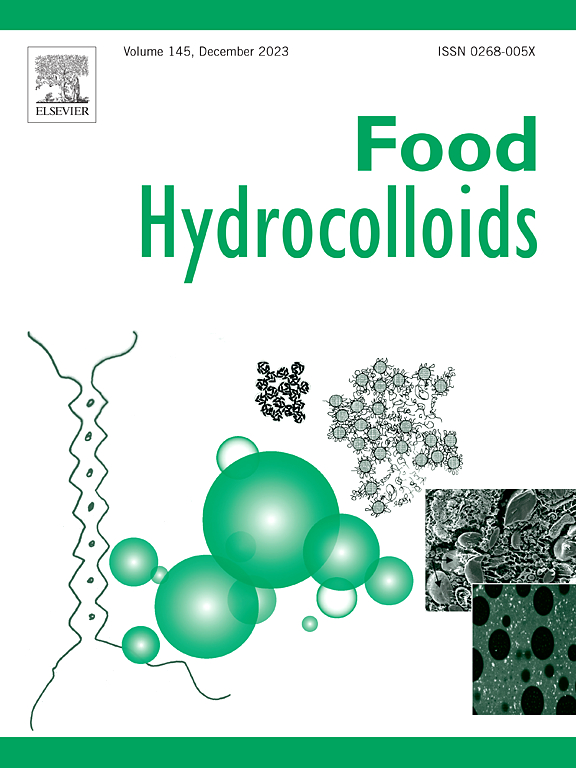Revealing the interaction mechanism between pectin and sugar: A case study of peach pectin and trehalose
IF 11
1区 农林科学
Q1 CHEMISTRY, APPLIED
引用次数: 0
Abstract
In order to explore the interaction mechanism between pectin and sugar molecules, a simulation system containing peach pectin and trehalose was constructed. The compared studies were carried out based on the changes in structural characteristics of pectin (P), pectin with heat treatment (HP) and pectin compounding with trehalose with heat treatment (TP). Firstly, pectin from peaches was characterized by the molecular weight, monosaccharide, chemical group and nanostructure. Furthermore, the isothermal titration calorimetry (ITC) and molecular docking were applied to explain the bonding force between pectin and trehalose. Results showed that the highest molecular weight (4.17 × 105 g/mol) depicted in TP illustrated the retarded effect of trehalose on the depolymerization or decomposition of pectin during thermal processing, which might ascribed to the branched chain structure of pectin and the intact three-dimensional network structure. Fourier transform infrared (FT-IR) spectroscopy and nuclear magnetic resonance (NMR) spectra revealed the imbedding of trehalose molecules within the pectin chains. ITC analysis suggested the exothermic binding between trehalose and pectin (ΔH = −27.89 kJ/mol) was primarily driven by enthalpy, and the binding stoichiometry (trehalose/pectin) was above 3:1. Molecular docking confirmed that hydrogen bond with a binding energy of −6.061 kcal/mol was the bonding force between trehalose and pectin. The results will provide a theoretical foundation for elucidating the effect of osmotic dehydration on the structural changes in pectin, which will significantly affect the textural formation of dehydrated fruits and vegetables.

求助全文
约1分钟内获得全文
求助全文
来源期刊

Food Hydrocolloids
工程技术-食品科技
CiteScore
19.90
自引率
14.00%
发文量
871
审稿时长
37 days
期刊介绍:
Food Hydrocolloids publishes original and innovative research focused on the characterization, functional properties, and applications of hydrocolloid materials used in food products. These hydrocolloids, defined as polysaccharides and proteins of commercial importance, are added to control aspects such as texture, stability, rheology, and sensory properties. The research's primary emphasis should be on the hydrocolloids themselves, with thorough descriptions of their source, nature, and physicochemical characteristics. Manuscripts are expected to clearly outline specific aims and objectives, include a fundamental discussion of research findings at the molecular level, and address the significance of the results. Studies on hydrocolloids in complex formulations should concentrate on their overall properties and mechanisms of action, while simple formulation development studies may not be considered for publication.
The main areas of interest are:
-Chemical and physicochemical characterisation
Thermal properties including glass transitions and conformational changes-
Rheological properties including viscosity, viscoelastic properties and gelation behaviour-
The influence on organoleptic properties-
Interfacial properties including stabilisation of dispersions, emulsions and foams-
Film forming properties with application to edible films and active packaging-
Encapsulation and controlled release of active compounds-
The influence on health including their role as dietary fibre-
Manipulation of hydrocolloid structure and functionality through chemical, biochemical and physical processes-
New hydrocolloids and hydrocolloid sources of commercial potential.
The Journal also publishes Review articles that provide an overview of the latest developments in topics of specific interest to researchers in this field of activity.
 求助内容:
求助内容: 应助结果提醒方式:
应助结果提醒方式:


